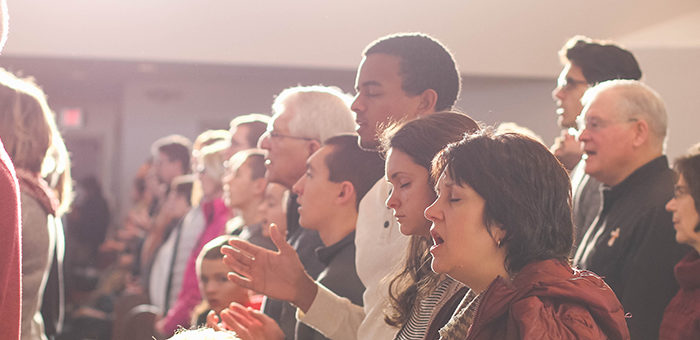With the arrival of the 20th century, evangelicals found themselves at a crossroads. They were losing conservative influence in the mainline denominations, and a reactionary fundamentalist movement was booming. In response, a thriving evangelical subculture began to form. Evangelicals sought a thoughtful middle way and channeled their energies into building institutions independent of established mainline denominations, including churches, denominations, mission agencies, Bible institutes, conference grounds and publishing houses.
They focused on evangelism and found the radio to be an effective medium for broadcasting their message. Lacking a central organizing body, the community centered around engaging personalities and independent institutions. The downside to this emerging popular movement was that many radio preachers, Christian college presidents and pulpiteers spoke and acted independently. At times they acted like rivals, weakening meaningful Christian witness.
This was particularly disheartening to J. Elwin Wright of the New England Fellowship. Wright’s New England Fellowship operated a summer conference to inspire and bring together evangelicals of all stripes throughout New England. The fellowship struck a chord in a location that many considered lost to the evangelical cause. By the end of the 1930s, the idea of duplicating the fellowship on a national scale emerged, and Wright crisscrossed the continent promoting the idea.
At the same time, Ralph Davis of Africa Inland Mission sensed the need for greater cooperation in missions and for representation before civil authorities. With these ideas brewing, Will Houghton, president of Moody Bible Institute, called for an exploratory meeting in October 1941 in Chicago. At that meeting, a temporary committee for United Action Among Evangelicals was created, Wright was named chairman, and a national conference was slated for April 1942 in St. Louis.
Harold Ockenga of Park Street Church in Boston gave his “The Unvoiced Multitudes” speech at the 1942 St. Louis meeting lamenting that the cause of evangelical Christianity in America had been reduced to individuals and individual congregations. He challenged those single voices to put aside differences for the sake of a more consolidated witness for Christ.
The 1942 conference drafted a constitution and statement of faith and called for a constitutional convention a year later. The group committed to a positive testimony to the gospel and determined “to organize an Association which shall give articulation and united voice to our faith and purpose in Christ Jesus.”
In May 1943, more than 1,000 participants gathered in Chicago and represented, by some estimates, nearly 50 denominations with a constituency of 15 million Christians. After amending the proposed constitution and doctrinal statement, they adopted the documents, named the organization the National Association of Evangelicals and appointed Harold Ockenga president. (In addition to the NAE, Ockenga helped found Gordon-Conwell Theological Seminary, Fuller Theological Seminary and Christianity Today.)
In 1943 an NAE office opened in Washington, D.C., to help on a number of fronts, such as supporting evangelical chaplains, assisting mission agencies in dealings with the State Department, championing the cause of religious broadcasting, and defending religious liberty. Continued concern over radio prompted the NAE to form the National Religious Broadcasters at its 1944 convention.
Also in 1944 the NAE created the Chaplains Commission to assist evangelical chaplains in the military, and the War Relief Commission, which would eventually become a subsidiary known as World Relief, NAE’s humanitarian arm. The following year, the NAE created the Evangelical Foreign Missions Association (now Missio Nexus), chartered to handle the special needs of missionaries and their agencies.
A central accomplishment of the NAE was its ability to pull together a new, broader coalition of theologically conservative Protestants. While the fundamentalist movement that preceded the NAE was largely the domain of Baptists, Congregationalists and Presbyterians, the NAE also embraced Pentecostal, Holiness and Anabaptist traditions.
Much has changed in the 75 years since the NAE first gathered. Yet the central commitments at the NAE remain. The NAE Statement of Faith, the gold standard of evangelical belief, remains unchanged from its adoption in 1943. The NAE’s commitment to a positive testimony to the gospel filters into all of the association’s work. And the NAE community remains a large, diverse body of Christ followers gathered to give a “united voice to our faith and purpose in Christ Jesus.”
This article originally appeared in Evangelicals magazine.
Heather Gonzales, NAE vice president and chief operating officer, has served the NAE since 2005, most recently as association director. Previously, she worked for IRI, an international democracy promotion organization; Africa Inland Mission in Namibia; and several congressional offices. Gonzales holds degrees in history and business management from Huntington College and a Masters of Liberal Studies from Georgetown University.




 View All Articles
View All Articles 





























